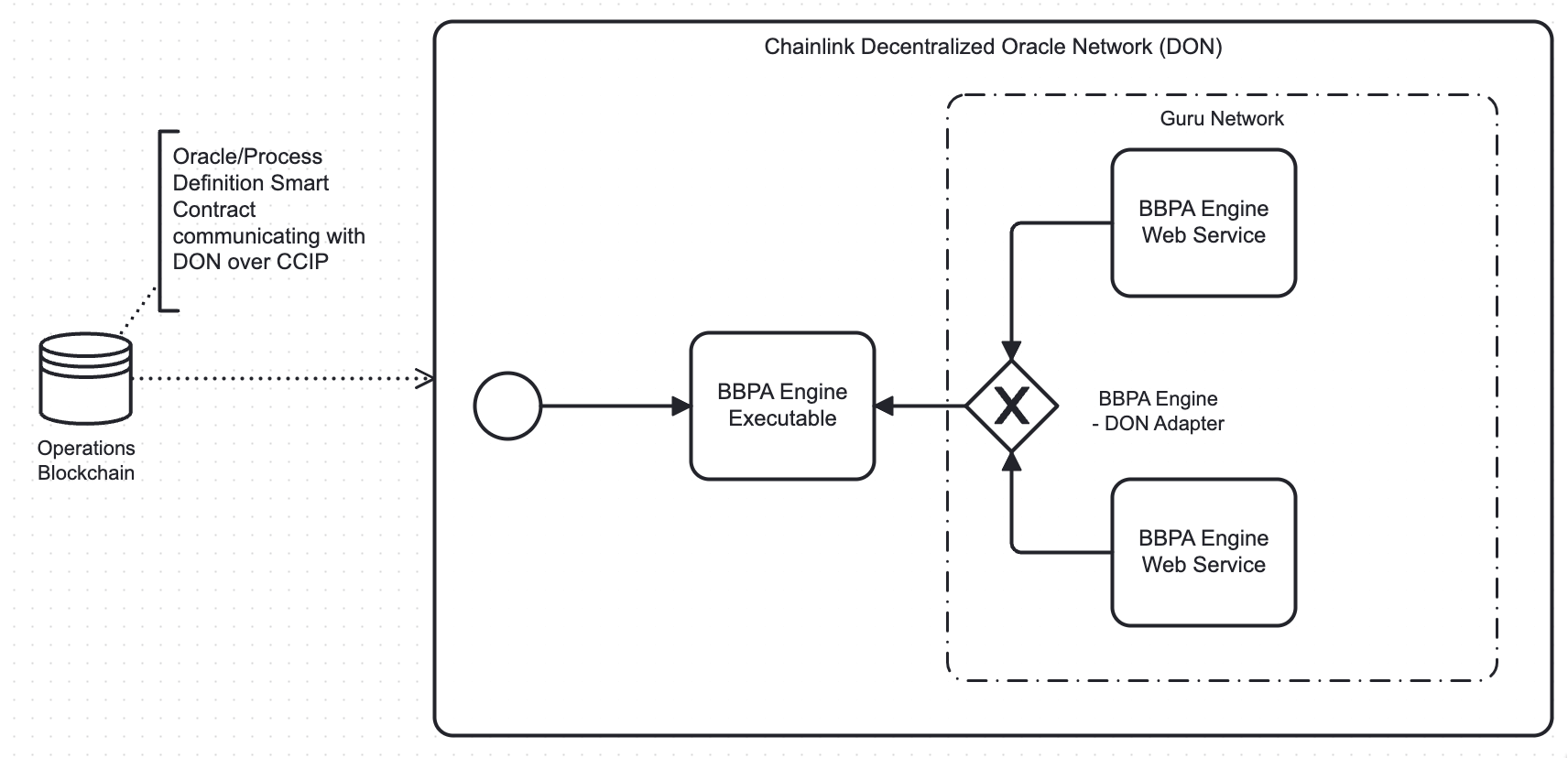Beyond Silos - Cross-Chain Interoperability in Guru Network
Guru Network ecosystem's ability to seamlessly connect and interact with different blockchains will be crucial for driving innovation and adoption

In the rapidly evolving world of blockchain technology, the concept of cross-chain interoperability has emerged as a critical factor in unlocking the full potential of decentralized applications and services. The ability for different blockchain networks to communicate and share data seamlessly is essential for creating a truly interconnected and user-friendly blockchain ecosystem.
The Challenge of Blockchain Fragmentation
The blockchain landscape is currently fragmented, with numerous independent networks operating in isolation. This fragmentation creates several challenges, including:
- Limited Asset Transferability: The inability to move assets freely between different blockchains hinders liquidity and creates friction for users.
- Reduced Composability: The lack of interoperability limits the ability to combine functionalities from different blockchains, stifling innovation and development.
- User Experience Barriers: Navigating multiple blockchain networks and managing different wallets and assets can be complex and confusing for users.
The Guru Network Solution
The Guru Network recognizes the importance of cross-chain interoperability and has integrated Chainlink's Cross-Chain Interoperability Protocol (CCIP) to address these challenges. CCIP enables secure and efficient communication between different blockchain networks, allowing for seamless transfer of assets and data.

Launched in its Early Access phase in July 2023, the Chainlink Cross-Chain Interoperability Protocol (“CCIP”) is Chainlink’s cross-chain interoperability solution, designed to forge a unified global liquidity network by interlinking a diverse range of blockchains, including public chains, private banking chains, and more. CCIP is powered by Chainlink Decentralized Oracle Networks (“DONs”), networks of oracle nodes that perform on- and off-chain computations to expand the functionalities of smart contracts. CCIP facilitates three types of cross-chain messaging: the transmission of data, tokens, or a combination of both.
CCIP's core strength lies in solving the cross-chain security problem by introducing additional validation layers, specifically a secondary Risk Management Network. As per Chainlink documentations, CCIP is the sole messaging protocol to achieve a level-5 interoperability standard in the space.

CCIP Messaging Process
- Users interact with the Router contract, which dispatches messages to the OnRamp contract.
- The OnRamp contract authenticates message details, manages message sequences, oversees billing, executes token lock/burn operations, and emits events to the Committing DON.
- The Committing DON monitors events emanating from the OnRamp contract, creates the Merkle root of the transactions, and sends the root into the CommitStore contract on the destination chain.
- Before the Merkle root can be actioned, the Risk Management Network conducts surveillance checks and ‘blesses’ the root if no anomalies are spotted.
- Concurrently, the Execution DON verifies the transaction consistency with the Merkle root in the CommitStore contract. It then generates another Merkle root and relays it to the OffRamp contract on the destination chain for validation against the previously ‘blessed’ Merkle root.
- Upon successful validation, the OffRamp contract finalizes the CCIP transaction by dispatching the messages to the Router on the destination chain, which in turn delivers them to the receiver.
CCIP distinguishes itself from existing cross-chain messaging solutions through its multifaceted security architecture. In particular, the integrity and security of the system are underpinned by three independent networks: the Risk Management Network, the Committing DON, and the Execution DON. Each network comprises multiple independent nodes, each run by independent operators possessing unique keys, thereby enhancing decentralization at a foundational level.
To further promote decentralization, the software code used for the Risk Management Network differs from that of the other two networks. This design choice underscores CCIP’s commitment to prioritizing security in its operations. By utilizing three separate networks for transaction verification, CCIP not only ensures a more robust verification process but also effectively mitigates the risk of network overload. This approach improves reliability, offering a solution to common performance challenges faced by protocols using a single, monolithic network system.
Additionally, CCIP’s architecture distinctively separates the commitment of transactions from their execution, providing extra time for secondary approvals and anomaly checks through the Risk Management Network. This separation strengthens the overall integrity and reliability of cross-chain communication. Complementing this architecture is CCIP’s rate-limiting mechanism for token transfers, which sets a limit on the value and volume of tokens that can be transferred between chains in a given timeframe. This safety mechanism helps mitigate potential losses in adverse scenarios, adding an extra layer of security to the protocol.

Benefits of Guru Network's Cross-Chain Approach
By embracing cross-chain interoperability, the Guru Network offers several key benefits:
- Enhanced Liquidity: The ability to move assets freely between blockchains increases liquidity and unlocks new opportunities for users and developers.
- Increased Composability: Seamless communication between blockchains enables the creation of more complex and innovative applications that leverage the strengths of different networks.
- Improved User Experience: A unified platform that supports multiple blockchains simplifies the user experience, making it easier to manage assets and interact with dApps across different networks.
The Future of Cross-Chain Interoperability
The Guru Network's commitment to cross-chain interoperability positions it at the forefront of the blockchain industry. As the ecosystem continues to evolve, the ability to seamlessly connect and interact with different blockchains will be crucial for driving innovation and adoption.
Conclusion
Cross-chain interoperability is the key to unlocking the full potential of blockchain technology. The Guru Network's integration of Chainlink CCIP demonstrates its commitment to creating a seamless and user-friendly blockchain experience. By breaking down the barriers between different networks, the Guru Network is paving the way for a more interconnected and accessible blockchain ecosystem.
